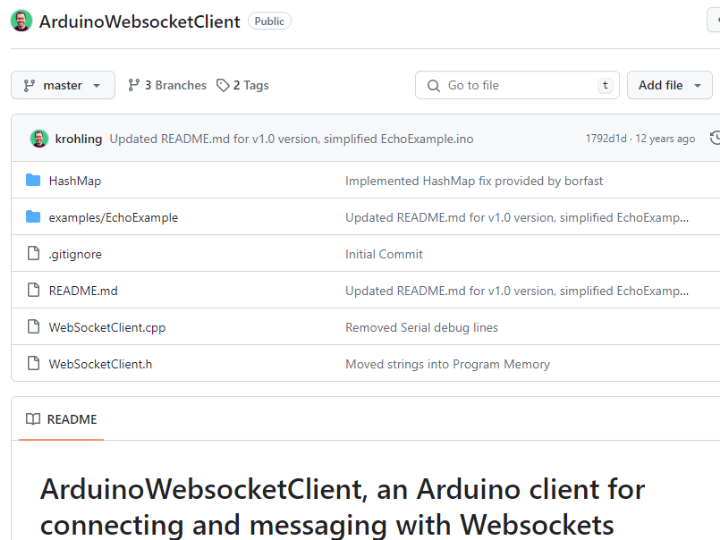ArduinoWebsocketClient
Websockets currently provide a simple and lightweight way to send and receive messages from web browsers.

This project is an Arduino-based websocket example. It describes in detail the pusher functionality of websocket. The pusher is a mechanism that enables real-time data communication in websocket and is used by web applications to receive real-time updates from the server or to send data from the client to the server in real-time.

Websocket is a bi-directional communication protocol based on HTTP that allows data to flow back and forth between a client and a server over a persistent connection. This is great for pushing real-time data, as opposed to HTTP's one-way requests and responses.
To actually implement a "real-time pusher", you can follow the steps below.
1. set up a websocket server: Set up a server that supports websocket behind your web server, or implement a server using a websocket framework or library.
2. implement a client: Implement a websocket client in your web application and connect with the server. This allows you to receive real-time data pushes or send data to the server.
3. Push data: Push data from the servlet to the client in real time. For example, you can deliver chats, messages, updated game status, stock prices, and more in real time.
Websocket enables real-time communication between the client and server, which is one of the key features required by many real-time applications. A "real-time pusher" is also used as part of a third-party service or framework that provides real-time push services.
These services utilize the push service issued by the app server to provide their own APIs for users to use on various devices, as shown below.
